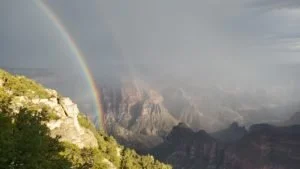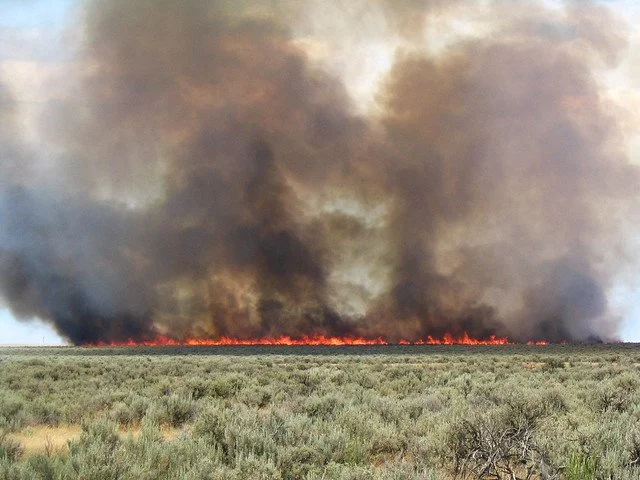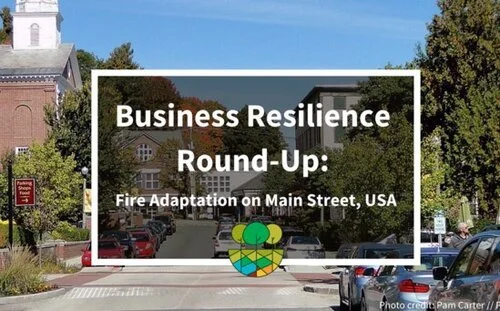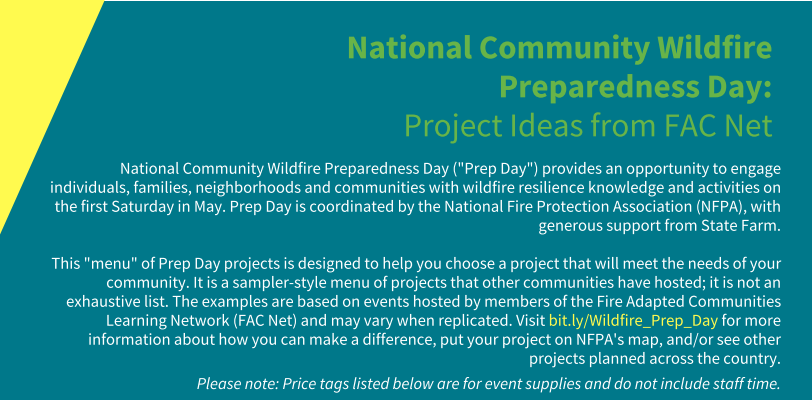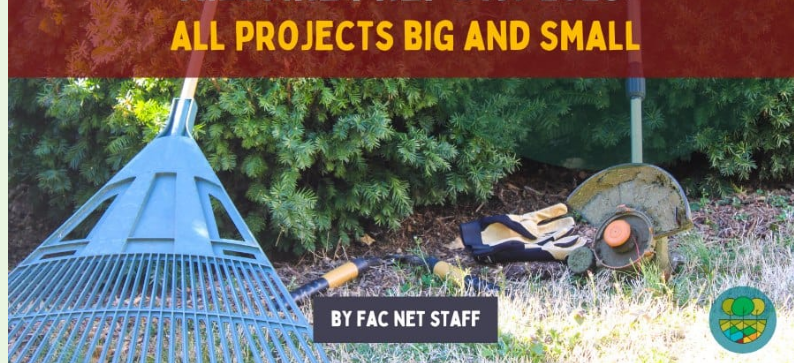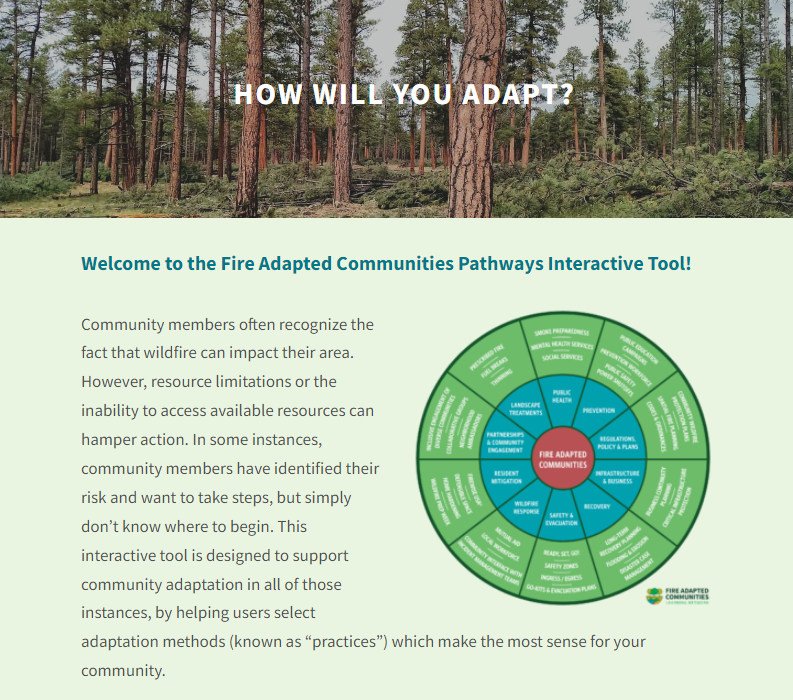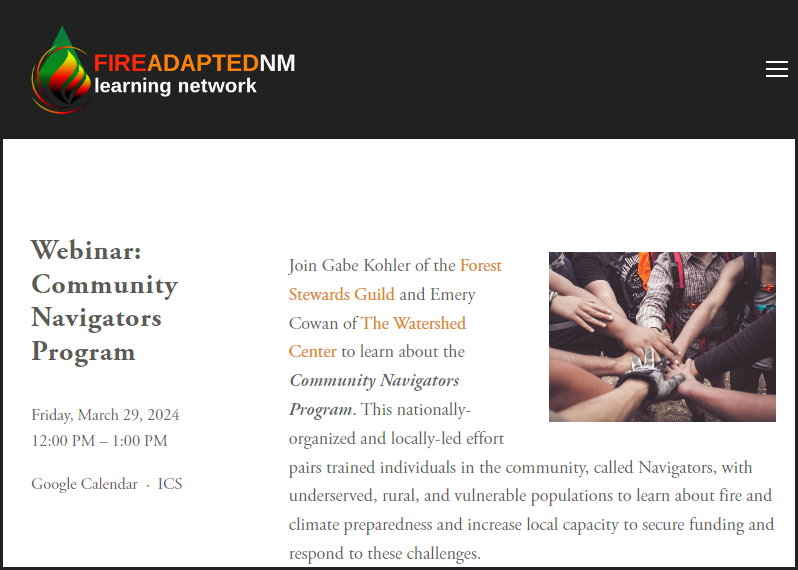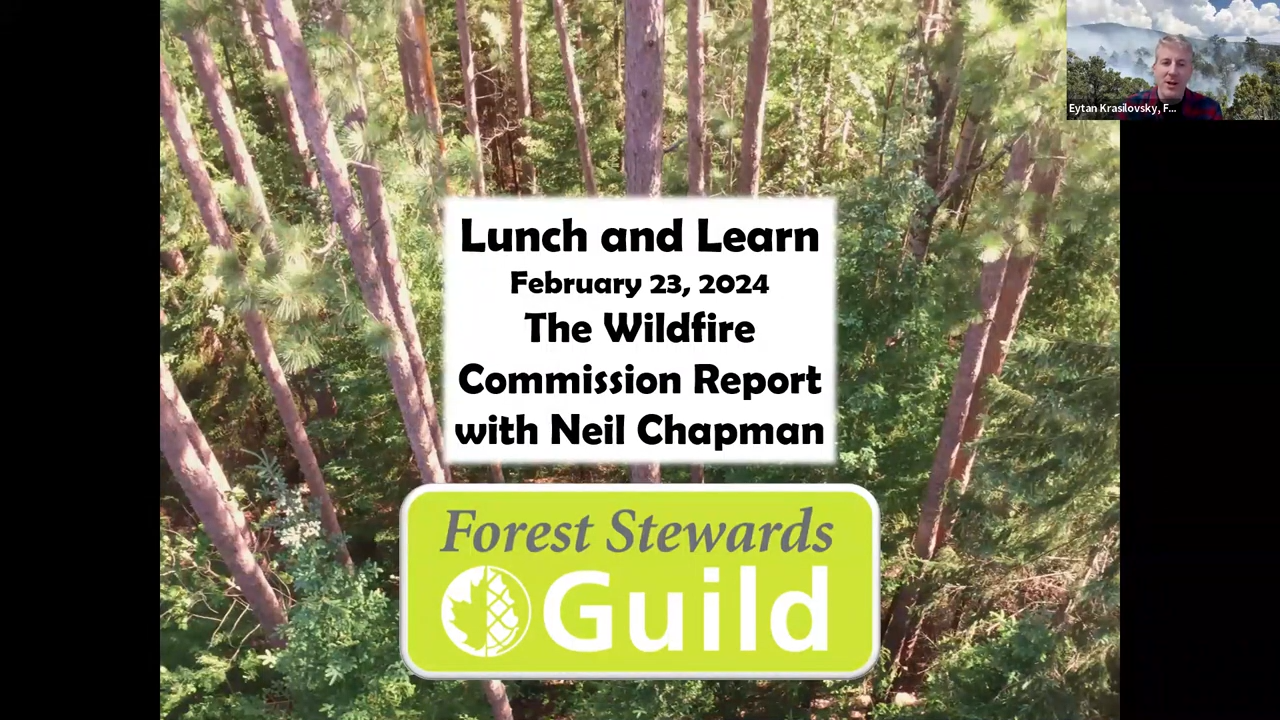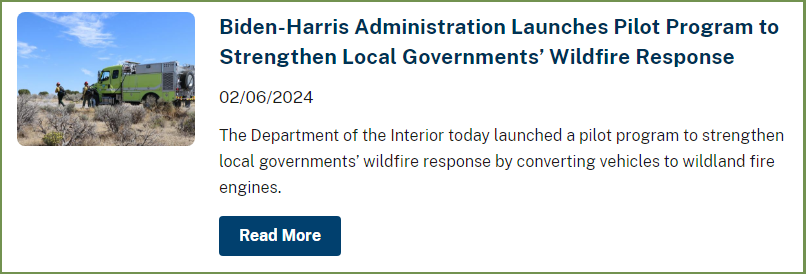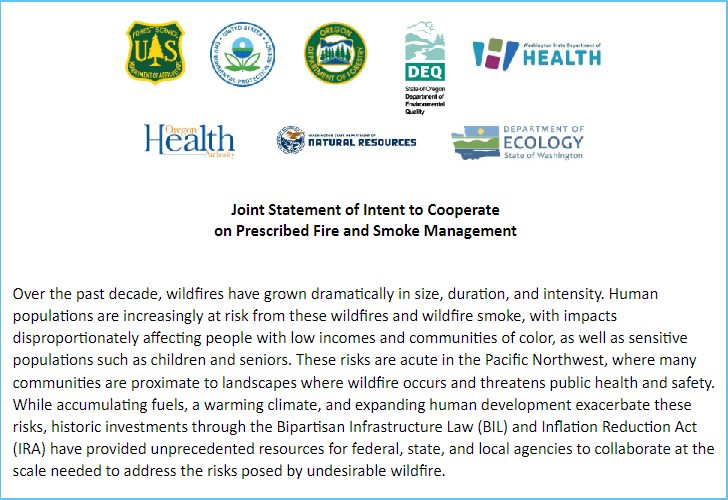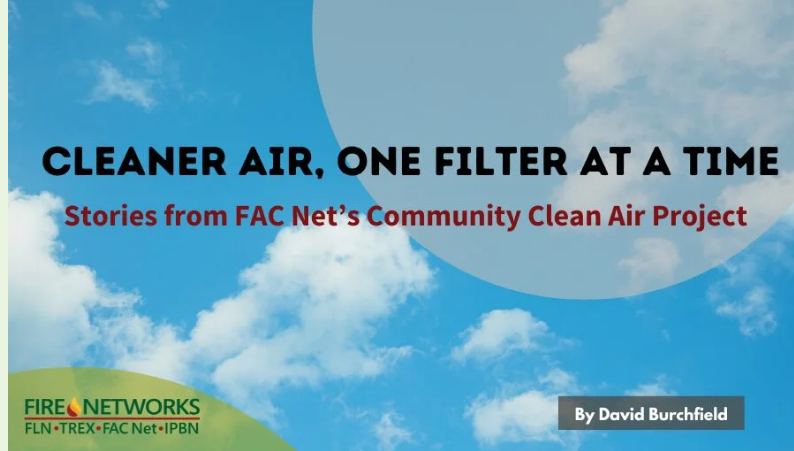Hi all,
Spring is a time for action when it comes to wildfire mitigation around your home and wildfire resilience in the surrounding landscapes. If you have been interested in taking your wildfire mitigation or landscape resilience implementation to another level, now is a great time to consider applying for funding to achieve these goals. Within the Inflation Reduction Act (IRA) and Bipartisan Infrastructure Law (BIL) there are a variety of funding mechanisms that can support your work. We encourage you to get to know some of these opportunities, because they will only be available for a short period of time.
With that in mind, this Wildfire Wednesday’s is about the Community Navigators Initiative, which is intended to support folks like you with awareness and technical support for accessing federal funding programs.
This Wildfire Wednesdays includes:
A recording of the 03/29 webinar about the Community Navigator Initiative
Grant News and Updates
Sign-up for technical assistance through Community Navigator Initiative through the Fire Adapted New Mexico learning network
Best,
Gabe
The Community Navigator Initiative
Watch this webinar about the Community Navigator program from the Fire Adapted New Mexico learning network (FACNM)
The Fire Adapted New Mexico learning network (FACNM) is working with the Forest Stewards Guild and the Watershed Center, along with several other national and regional nonprofit organizations, is partnering with the US Forest Service on a community navigator initiative.
The goal of this effort is to connect communities facing wildfire risk and climate change impacts, as well as historically underserved, rural, and low-income communities, to Forest Service funding and partnership opportunities supported by the Inflation Reduction Act and the Infrastructure Investment and Jobs Act (also known as the Bipartisan Infrastructure Law). For a snapshot of the programs and activities that received funding through these laws, see our overview of BIL & IRA-supported Climate and Wildfire Resilience Funding Opportunities.
Key aspects of FACNM’s community navigator work include:
Developing relationships with communities who may benefit from new funding opportunities and connecting them with sources of technical assistance and support within our networks.
Creating tools, trainings, and other resources to support organizational capacity-building.
Providing individual technical assistance to help communities identify and apply for funding opportunities and comply with post-award financial management and reporting requirements.
Another important aspect of our work involves elevating community perspectives and feedback about the barriers that communities face in accessing US Forest Service support and partnership, with the goal of helping vision a more equitable system for all.
The other organizations working on the Forest Service community navigator initiative include Coalitions and Collaboratives, Hispanic Access Foundation, Federation of Southern Cooperatives, First Nations Development Institute, and the American Indian Alaska Native Tourism Association.
Grant News and Updates
All federal grant applicants must be registered with SAM.gov. Register NOW as this process can take weeks and is needed to apply for funding opportunities via Grants.gov. If SAM.gov registration issues arise, contact Procurement Technical Assistance Center (PTAC) for free assistance.
IRA Forest Landowner Support
Deadline is August 21, 2024
Provides grant opportunities to entities and organizations delivering technical and financial assistance to private forest landowners - including Tribes, underserved landowners, and small-acreage landowners - to participate in emerging private markets for forest resilience and climate mitigation.
NOFO #1 USDA-FS-2023-IRA-FLS-01:
Supporting Underserved and Small-Acreage Landowner Participation in Emerging Private Markets
Last month, the Forest Service announced the award of the first round of this funding. A total of $116 million was awarded to 20 Forest Landowner Support projects (scroll down to the Spring 2024 dropdown under “Forest Landowner Support Awardees”) to provide equitable access to emerging climate markets. Many of the awardees represent or will support underserved landowners located in or providing benefits to disadvantaged communities.
Funding is still available for proposals under $2 million that support the participation of underserved landowners and landowners owning less than 2,500 acres in emerging private markets for climate mitigation or forest resilience. Proposals for NOFO 1 are reviewed in batches on a quarterly basis:
Upcoming batch: All proposals received March 1, 2024 - May 31, 2024.
Final batch: All proposals received June 1, 2024 - August 21, 2024
IRA-FLS NOFO1 Frequently Asked Questions (available in Related Documents under the “full announcement materials” dropdown)
NOFO #2 USDA-FS-2024-IRA-FLS-02:
Tribal Access to Emerging Private Markets for Climate Mitigation or Forest Resilience
The Forest Service’s Forest Landowner Support program has a new funding opportunity focused on Tribal access to emerging private markets for forest resilience or climate mitigation (see announcement here). Eligible applicants include: Federally recognized Tribes, Alaska Native Corporations/Villages, and Tribal Organizations.
IRA-FLS NOFO2 Frequently Asked Questions (available in Related Documents under the “full announcement materials” dropdown)
Resources:
The Forest Owner Carbon and Climate Education (FOCCE) program is dedicated to helping forest owners make smart decisions about engaging in the carbon economy. Their program hostsThe program includes online training modules and resources and peer education programs.
The Forest Service’s next Open Office Hour session for the FLS program is Friday, May 3, 1-2 p.m. Mountain Time.
Contact SM.FS.LandownerIRA@usda.gov for more information and to be added to their email distribution list.
Community Wildfire Defense Grant
Funding communities to 1) develop and revise Community Wildfire Protection Plans (CWPPs), or 2) implement projects described in a CWPP that is less than 10 years old. Contact sm.fs.usfs_cwdg@usda.gov for more information.
Round 2 applications are currently being reviewed. The agency received 500 applications requesting $965 million, and has about $250 million in available funding. We are waiting on official announcements about Round 2 awards and Round 3 release.
Resources:
Applicants are highly encouraged to coordinate with their State Forestry Agency (or equivalent) during proposal development. See a list of State Forestry Agencies and State Forest Action Plans here.
Sign up for Community Navigator Assistance
CALENDAR: Check out our calendar of events for upcoming application deadlines, trainings, informational webinars and other opportunities coordinated through the Watershed Center.
ASSISTANCE: Fill out a request form to connect with one of our navigators who can help brainstorm proposal and funding ideas, provide information and insight on funding and resources opportunities, review your application, or help with post-award grant management questions.
FEEDBACK: Have you worked with a community navigator and want to share feedback? We’d love to hear from you! Your response will be used to improve our future services.





